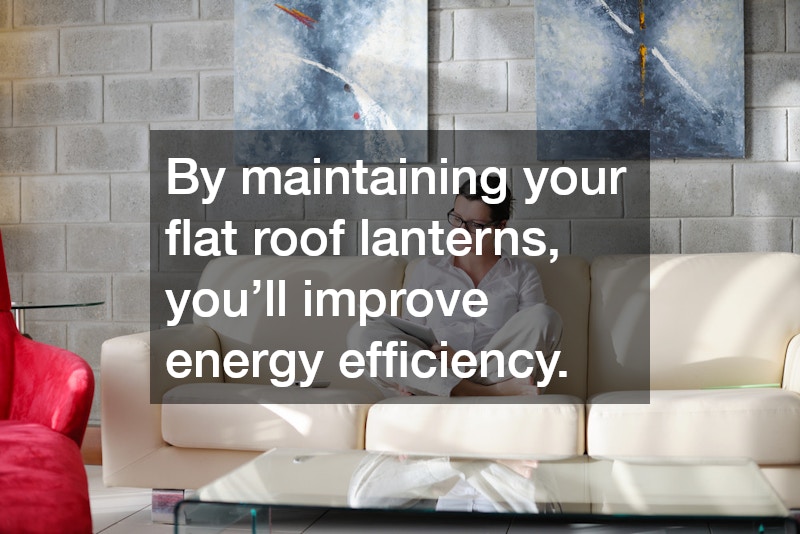Disclaimer: Life Cover Guide. This site provides family & home content for informational purposes only.
Flat roof lanterns are an excellent way to introduce more natural light into your home or office while adding a stylish architectural feature to your building. These modern skylights are commonly installed on flat or low-pitched roofs, offering an elegant solution to brightening up dark spaces. However, like any feature of your home, flat roof lanterns require regular maintenance to ensure they function efficiently and maintain their aesthetic appeal.
In this guide, we’ll explore how to maintain flat roof lanterns, ensuring they last for years to come.
Benefits of Regular Maintenance for Flat Roof Lanterns
Before diving into the specifics of maintenance, it’s essential to understand the benefits of regularly caring for your flat roof lanterns. Proper maintenance not only ensures they remain visually appealing but also prevents potential issues like leaks, drafts, or damage from debris. Regular cleaning and inspection can also help extend the lifespan of your lanterns, making them a long-term investment for your home or office.
By maintaining your flat roof lanterns, you’ll improve energy efficiency, minimize the risk of water damage, and preserve the natural light that enhances your interior space. Let’s break down the steps to properly maintain your flat roof lanterns.
1. Regular Cleaning of Flat Roof Lanterns
Keep the Glass Clear
The first and most crucial step in maintaining flat roof lanterns is cleaning the glass regularly. Over time, dirt, dust, leaves, and other debris can accumulate on the surface, obstructing light and making the lantern look unappealing. Depending on the surrounding environment, such as proximity to trees or traffic, you may need to clean the glass more frequently.
To clean the glass effectively:
- Use a soft cloth, sponge, or squeegee.
- Use mild soapy water to remove dirt and grime.
- Avoid abrasive cleaners or scrubbing pads, as they may scratch the glass.
- Rinse thoroughly with clean water and dry the surface to prevent streaks.
For harder-to-reach flat roof lanterns, consider using extendable cleaning tools, or hire professional window cleaners who can safely access high areas.
Check for Stains or Algae Growth
In some environments, algae or moss can begin to grow around the edges of the flat roof lanterns, especially in damp or shaded conditions. If you notice any green or black growth on the frame or glazing, remove it promptly to prevent staining or structural damage. You can use a mild cleaning solution with water and vinegar to eliminate algae, followed by a thorough rinse.
2. Inspect and Clear Gutters and Drainage
Ensure Proper Water Drainage
Flat roof lanterns are often installed in areas where water drainage is crucial. Since flat roofs don’t have the natural slope for water to run off as easily as pitched roofs, keeping the drainage system clear is essential to prevent water pooling or leaks.
Regularly inspect the gutters and drainage around your flat roof lanterns. Clear out any debris, such as leaves, twigs, or dirt, to ensure water can flow freely away from the lantern. Clogged gutters can cause water to build up around the rooflight, increasing the risk of leaks and damage to the roof structure.
3. Check for Leaks and Seals
Examine Seals and Flashing
The seals around your flat roof lanterns are critical to preventing water infiltration and maintaining energy efficiency. Over time, these seals can degrade due to exposure to weather conditions, such as UV rays, rain, and temperature fluctuations. Regularly inspecting the seals ensures that they remain intact and functional.
Look for signs of wear, cracks, or gaps in the seals. If you notice any damage, it’s essential to reseal the affected areas promptly. In most cases, you can apply a waterproof sealant to fill in small gaps. However, if the seals are severely damaged or worn, it may be necessary to consult a professional to replace the seals and flashing.
Prevent Condensation
Condensation can sometimes form inside the flat roof lantern, particularly during colder months. This can happen when warm, moist air from inside the building meets the cooler surface of the glass. While minor condensation is often not a cause for concern, excessive moisture can lead to mold or mildew growth.
To prevent condensation:
- Ensure that the room is adequately ventilated.
- Use extractor fans in kitchens and bathrooms.
- Consider installing thermal glazing or energy-efficient glass that reduces heat transfer.
If condensation becomes a persistent problem, consulting a professional may help you identify the cause and find long-term solutions.
4. Inspect the Frame and Structure
Check for Cracks or Damage
While the glass is the most noticeable feature of your flat roof lantern, the frame also requires regular attention. The frame, often made of aluminum, uPVC, or timber, can become damaged or warped over time due to environmental exposure.
Inspect the frame for any cracks, warping, or damage that may compromise the structure of the lantern. If you notice any issues, such as gaps between the frame and the roof or signs of rust or rot (in the case of timber frames), it’s crucial to address these problems promptly to prevent further damage.
Lubricate Opening Mechanisms
If your flat roof lanterns are operable and have opening mechanisms for ventilation, ensure that these are functioning smoothly. Over time, the opening systems, such as hinges or locks, can become stiff or difficult to operate. Lubricating the moving parts with a suitable lubricant will keep the mechanisms working efficiently.
Flat roof lanterns are a stunning feature that enhances natural light and the overall aesthetic of your property. To keep them in top condition, regular maintenance is key. By cleaning the glass, checking the seals, ensuring proper drainage, and scheduling professional inspections, you can extend the lifespan of your flat roof lanterns and ensure they continue to brighten your home for years to come. Regular care not only preserves the beauty of your lanterns but also protects your property from leaks, drafts, and other potential issues.
.







